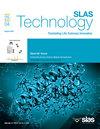An out-of-hours cell culture autopilot proof of concept based on a modular architecture using the SiLA2 open standard
IF 3.7
4区 医学
Q3 BIOCHEMICAL RESEARCH METHODS
引用次数: 0
Abstract
There has been much talk and substantial progress in automated and flexible smart lab concepts in biopharma R&D. This is acknowledged to be important in enabling the acceleration of innovation and digitization of R&D operations. However, many proposals stop short of full end-to-end automation – limiting out-of-hours operation, which is particularly important in tasks such as cell culture - or are locked to a particular vendor's offering in a dedicated system - which can limit the flexibility and shared use access so important in R&D.
In this contribution we describe a proof-of-concept of a fully integrated automated adherent cell culture system based on a modular architecture that allows integration of the most recent developments on the market (cell imaging, collaborative cloud robotics, mobile robots) as well as reuse of existing legacy devices (incubators and refrigerators). This creates a “cell culture autopilot” for small-scale cell culture, with repetitive media exchange, confluency checking, and splitting steps which are typically labor-intensive and must take place at times outside the working day.
The system is built around the open lab communication standard SiLA2 and various other open-source resources to create three ways in which the SiLA2 standard can be leveraged. This choice of connectivity options provides freedom to integrate the most appropriate device while minimizing undesired vendor-lock in This paper provides sufficient details for the reader to access the resources to build on such a system for cell culture and other applications. We believe this to be the first report of a true vendor-agnostic system operating in a commercial environment.
This paper corresponds to the special issue on Robotics in Laboratory Automation as it describes robotics for labware transportation within a shared environment, and an automation framework supporting physical and logical interoperability.
一个非工作时间的细胞培养自动驾驶仪的概念证明,基于使用SiLA2开放标准的模块化架构。
在生物制药研发中,自动化和灵活的智能实验室概念已经有了很多讨论和实质性进展。这对于加速创新和研发业务数字化至关重要。然而,许多建议没有实现完全的端到端自动化——限制非工作时间操作,这在细胞培养等任务中特别重要——或者被锁定在专用系统中的特定供应商的产品上——这可能限制灵活性和共享使用访问,这在研发中非常重要。在这篇文章中,我们描述了一个基于模块化架构的完全集成的自动化贴壁细胞培养系统的概念验证,该系统允许集成市场上最新的发展(细胞成像,协作云机器人,移动机器人)以及现有遗留设备(孵化器和冰箱)的重用。这为小规模细胞培养创造了一个“细胞培养自动驾驶仪”,具有重复的培养基交换、汇合性检查和分裂步骤,这些步骤通常是劳动密集型的,必须在工作日以外的时间进行。该系统是围绕开放实验室通信标准SiLA2和各种其他开源资源构建的,以创建可以利用SiLA2标准的三种方式。这种连接选项的选择提供了集成最合适设备的自由,同时最大限度地减少了不必要的供应商锁定。本文为读者提供了足够的详细信息,使他们能够访问建立这样一个用于细胞培养和其他应用的系统的资源。我们相信这是在商业环境中运行的真正的与供应商无关的系统的第一份报告。摘要:本文对应于实验室自动化中的机器人专刊,因为它描述了共享环境中实验室设备运输的机器人技术,以及支持物理和逻辑互操作性的自动化框架。
本文章由计算机程序翻译,如有差异,请以英文原文为准。
求助全文
约1分钟内获得全文
求助全文
来源期刊

SLAS Technology
Computer Science-Computer Science Applications
CiteScore
6.30
自引率
7.40%
发文量
47
审稿时长
106 days
期刊介绍:
SLAS Technology emphasizes scientific and technical advances that enable and improve life sciences research and development; drug-delivery; diagnostics; biomedical and molecular imaging; and personalized and precision medicine. This includes high-throughput and other laboratory automation technologies; micro/nanotechnologies; analytical, separation and quantitative techniques; synthetic chemistry and biology; informatics (data analysis, statistics, bio, genomic and chemoinformatics); and more.
 求助内容:
求助内容: 应助结果提醒方式:
应助结果提醒方式:


